
Opinion
The 20 best DS games for 20 years of Nintendo DS
by Cassie Mammone

Nintendo is known for its innovative revolutions within the video game industry. These days, it’s the successes that stick in our memory. However, the company has also made serious miscalculations with some of its ideas in the past.
Anyone who’s been playing Nintendo products for a long time will have experienced many gimmicks throughout the lifetime of various consoles. Many of them represent a minor or major revolution in the video game industry. From the digital control pad on the NES controller to the DS’ two screens and the motion controls of the Nintendo Wii, many ideas are now firmly established in the video game landscape.
But for every brilliant idea, there’s also a gimmick that’s disappeared into oblivion because it either feels bad or wasn’t bought by the target demographic for other reasons.
Whether the new features of the Switch 2 – such as mouse control on the Joy-Cons – are sustainable innovations or unnecessary gimmicks remains to be seen. I’m sceptical, but open to surprises.
Until I can see the new hardware for myself, I’m taking the opportunity to introduce a few gimmicks that Nintendo failed with in the past.
First, I’ll present Nintendo’s failed console hardware innovations in chronological order. All of them were either poorly received by the public or not used by developer studios. After that, I’ll take a trip into the world of Nintendo’s most bizarre gimmick accessories.
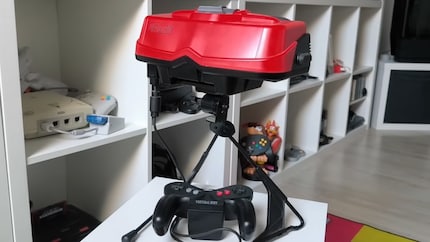
Strictly speaking, it wasn’t just the 3D features of the Virtual Boy that flopped; the device failed in every respect. The Virtual Boy was a VR headset released in 1995, many years before the VR trend of the late 2010s.
With just 770,000 units sold, the console is one of the biggest failures in Nintendo’s history. One of the reasons for this was its underdeveloped 3D functionality, which caused headaches during longer play sessions. In addition, the display only showed red images on a black background. The tiny selection of just 22 games and an uncomfortable mount were the final nails in the coffin for this early hardware flop.
In the video below, you can see what games for the Virtual Boy look like using Mario’s Tennis as an example. I wouldn’t put up with a headache for that.
Fellow editor Kevin is up for it, though. He got help to repair a broken model and, at least for a short while, enjoyed gaming with the early VR headset. More on that here:
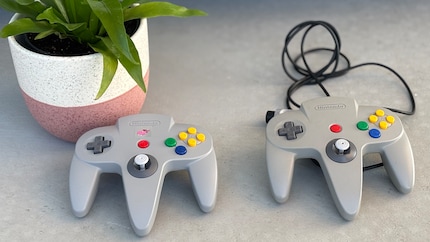
Nowadays, the layout of the N64 controller seems very strange. Probably because of its three handles. In 1996, there was still no blueprint for consoles, controllers included, that worked with three-dimensional games. I’m sure I wasn’t the only one who wondered how to hold the controller when I first saw it. But after decades of use, I instead wonder what the handle on the left even does.
I always place my left hand on the middle handle with the joystick, while my right hand is responsible for pressing the A, B and C buttons. In this position, I can easily reach the Z button on the back of the controller with my left hand. The fact that neither Nintendo nor its competitors have released a controller with three grips since then proves how pointless this layout with a mostly untouched left grip is.
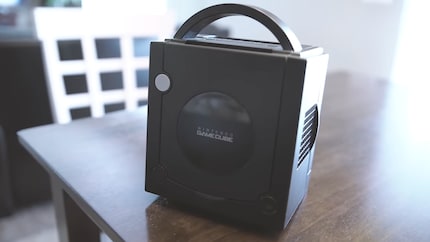
Turns out the Nintendo Switch isn’t the first portable home console from Nintendo – at least in theory. The GameCube was designed for gamers to use on the move as early as 2001. It has a handle on the back, allowing it to be carried in one hand.
But unlike the Switch, the GameCube has to be connected to a TV and power supply to play. And it’s not like I need the handle to take the thing to my friend’s place. I’d rather put the GameCube in a proper carry bag, like all other home consoles. So while it’s exciting to see Nintendo’s been toying with the idea of a portable console for a while, the usefulness of the GameCube handle is limited.
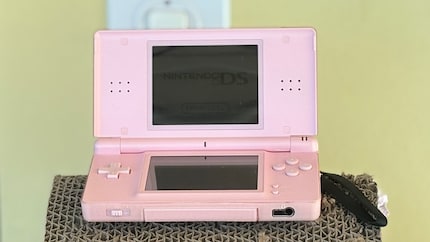
After several successful generations of the Game Boy, Nintendo decided to break new ground with the DS. According to the current numbers, the handheld is still the best-selling Nintendo device ever with 154 million units. In addition to ingenious innovations such as the touchscreen and two displays, the smart selection of games for hardcore and casual gamers alike is probably the reason for its success too.
However, one rarely used feature of the handheld is the built-in microphone, located between the two screens. True, in some games, such as The Legend of Zelda: Phantom Hourglass, the gimmick has an interesting use. Here, for example, it helps solve puzzles. Just blow into the microphone to remove dust off a map. In most games, however, the microphone serves no purpose.
I mean, I get why. Who wants to constantly blow or shout into their handheld? I already feel weird just moving my Switch back and forth on the train to aim in The Legend of Zelda: Breath of the Wild. I can’t even imagine shouting the name of my Nintendogs into the microphone in public.
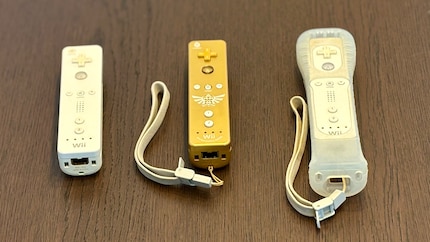
In truth, the Wii is actually a particularly successful example of innovative Nintendo ideas. Especially when it comes to the controller. Anyone and everyone can pick up the intuitive Wii remote (shortened to Wiimote) and start playing without much faff.
However, not every Wii idea is worth its weight in gold. The controller has built-in speakers, which are barely used in any game. Although modern PS5 controllers, among others, have this feature too, it didn’t catch on with later Nintendo models. And really, when a device is constantly being swung and shaken around, how useful is a loudspeaker actually?

Hand on heart, how often did you really push up the 3D slider on your Nintendo 3DS? At most, I did it for demonstration purposes – for example, to impress my friends with a 3D effect that didn’tneed glasses. Although the 3D feature is the handheld’s unique selling point, it also manages well without the gimmick. Nintendo also realised this, at the latest with the release of the 2DS, which came without a 3D screen.
Even more unnecessary than the 3D effect are the 3D cameras built into the device. I can use them to take low-resolution 3D photos and marvel at my snapshots on the device. Some games also make use of the cameras with AR games. Compared to smartphones, however, they were already technically outdated when the 3DS was released in 2011.

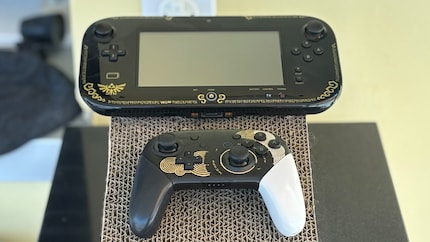
The Wii U is a dark chapter in Nintendo’s history. The device was a flop for several reasons following the success of the DS handhelds and the Wii console – one of these being the controller. The Wii U Gamepad is vaguely reminiscent of the Switch, but can’t be used standalone without a stationary Wii U.
Although the gamepad enables you to play without a TV screen, it’s less suitable as a controller. The Wii U gamepad is simply too clunky for that. The asymmetrical gameplay it conjures in titles like Nintendo Land is a nice gimmick at best. Mind you, it’s still a thrill playing the Mario Chase mini-game. I, a fleeing Mario, can always keep my hunters in view on the pad’s screen. In some titles, such as The Legend of Zelda: The Wind Waker, the screen displays useful elements such as the world map. While this helps, the feature’s definitely optional. No wonder then that the second-screen principle never caught on with Nintendo’s home consoles.
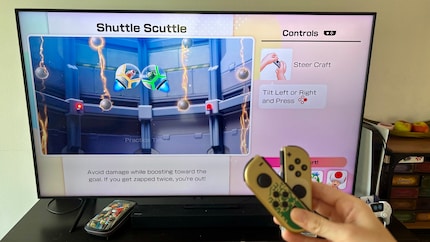
The Joy-Cons from the first Nintendo Switch bring us full circle to the initial topic of this article, the mouse feature in the Switch 2 Joy-Cons. The controller has various weaknesses (my nemesis, Joy-Con drift), but for me the infrared sensor and HD rumble in particular are a disappointment.
The right Joy-Con has a small infrared camera built into the bottom. Nintendo advertised this IR motion camera as being able to recognise shapes, movements and the distance of objects. Yet while Nintendo Labo owners in particular can use the feature (we’ll come to that chestnut later), the rest of us only have a modest selection of games at our disposal.
In comparison, the HD rumble function is used more frequently, but also isn’t anything more than a nice gimmick. Granted, the laborious ghost sucking from Luigi’s Mansion 3 feels quite immersive, since I can feel how the strength of my suction changes. But having to repeatedly explain to my friends that the strength of the vibration can change in certain Mario Party mini-games isn’t worth it.
At the recent Direct presentation for the Switch 2, Nintendo not only presented its new hardware for the hybrid console, but some first accessories too. These include the Nintendo Switch 2 Camera, which will be released in both a standard and Piranha Plant version. So far, I’ve mainly heard criticism about the new gimmick. Apparently, the resolution is too low, it only makes sense with an online subscription and the cable can only be plugged into the console instead of the dock. Still, if the camera is a flop, it wouldn’t be the first Nintendo accessory to go down badly with the public.
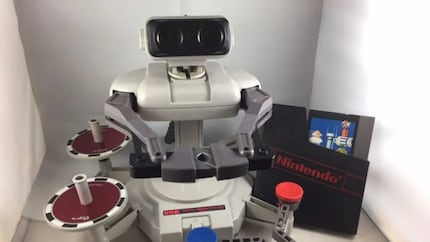
Nowadays most famous as a character in the game series Super Smash Bros., R.O.B. actually has its origins as an accessory for the Nintendo Entertainment System. Back then, the little robot was supposed to whet the appetite of American children for Nintendo’s first home console after the big video game crash. This may well have happened, but R.O.B. also started a trend that would be repeated in the coming years with further ideas: a promising idea ultimately turning out to be just a decent gimmick.
R.O.B. worked with two games, Gyromite and Stack Up. When I performed an action using the controller, my character on the TV screen would react just like R.O.B. in the real world. But while this initially felt revolutionary, it quickly lost its appeal. Still, at least the little robot has since made numerous other appearances with Nintendo, albeit more in the form of software than hardware.
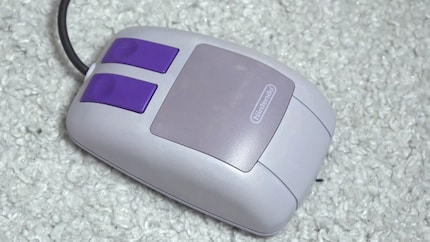
The Super NES Mouse looks like a typical, old-fashioned computer mouse (including the ball inside!) and can be plugged into the same controller slot via a 140 cm cable.
The mouse can be used to play strategy games such as Civilization on the Super Nintendo. Mario Paint as well as Mario & Wario were published by Nintendo itself and were specially designed for mouse control. But apart from that, the game library supported by the mouse is very limited. It contains just over 100 titles, making the SNES mouse a convenient gimmick at best. Hopefully, the mouse for the Switch 2 controller will be different.
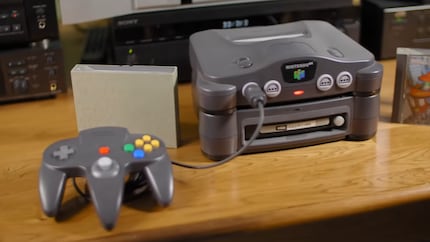
Nintendo has always gone its own way in the video game industry. Just like the Nintendo 64, the Switch requires cartridges – unlike the competition, which works with optical data storage. Interestingly, the 64DD enhanced the performance of the N64 console by enabling the use of floppy disks. Among other things, this enabled a real-time clock, chat services and online games.
But what sounds like a good idea on paper was mostly characterised by delays and failures in reality. Two years after the original release date, the 64DD was only available in Japan. With nine games and around 15,000 units sold, the accessory is considered a flop. Fortunately, Nintendo was able to reuse many game ideas for the 64DD in the GameCube released after. And despite its failure, this extension is now worth several thousand francs thanks to its collector’s value.
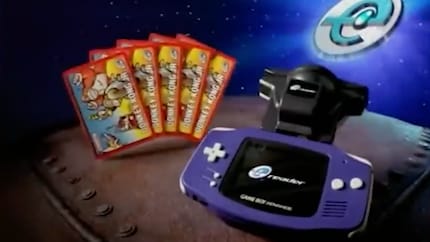
The idea of scanning plastic for additional game content didn’t just come to Nintendo with its numerous Amiibo figures. The e-Reader, an accessory for the Game Boy Advance, is inserted into the handheld’s module slot. Cards with specific point codes can then be scanned via the e-Reader to unlock new levels and enemies for games or entire NES titles, among other things.
While well received in Japan and lasting until the Game Boy handhelds were discontinued, it fell short of expectations in the USA. The gimmick flopped commercially, so Nintendo didn’t even release the e-Reader in Europe. Shame.
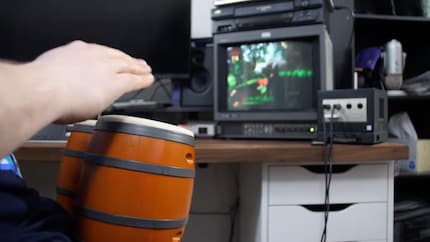
The DK bongos weren’t necessarily a commercial flop, but they still go down as a controller only ever used in very few games before disappearing into insignificance. The drums are used in the three Donkey Konga games as well as in Donkey Kong Jungle Beat. In these, I can either drum on the bongos or clap my hands. My palms aren’t massive fans of this admittedly fun gimmick.
Still, at least some people are enjoying the controller and its strange gimmick to this day. Some gamers use it to play through tough games like Sekiro: Shadows Die Twice. And who knows how many versions of rhythmic drumming game Taiko no Tatsujin: Drum ’n’ Fun! are now being played on the Switch via the GameCube connection using DK bongos. Finding this use case really surprised me during my research.
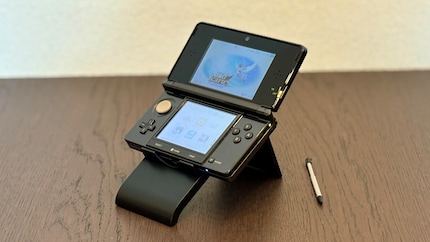
The 3DS stand is designed to take the strain off your fingers and wrists when gaming. I admit, the sentiment behind the accessory makes perfect sense. Unfortunately, it’s completely contrary to the purpose of a handheld, which is meant to be used everywhere. To even use the stand, I have to place it and the 3DS on a flat surface.
In addition, the 3DS stand is hardly ever used. Only in Kid Icarus: Uprising does it spring to life. Although the game’s controls are original, they’re anything but ergonomic. Still, at least the game is fun. The 3DS stand, on the other hand, is a misfire.
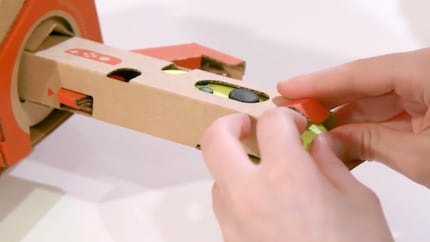
The idea of making interactive toys out of cardboard sounds like great fun for young and old. Subsequently using the various creations isn’t that much fun, though. The gimmick doesn’t know how to inspire beyond its status as a new goodie.
For example, I can assemble a motorcycle mount. I can then use the steering wheel to control my character in the corresponding game and accelerate the motorcycle using the throttle. The fun factor remains limited, and handling is much more complicated than with a classic controller. What’s more, very few games support the special controls beyond software developed specifically for Labo. As a result, Labo boxes are now gathering dust in many households.
Still, the advertising looks interesting:
The reality, however, is less spectacular:
Which useless feature do you actually enjoy and find practical?
The competition has ended.
I wrote my first text about video games when I was eight years old. I haven't been able to stop since. The rest of my time is spent on my love for 2D husbandos, monsters, my cats and sport.
Interesting facts about products, behind-the-scenes looks at manufacturers and deep-dives on interesting people.
Show all
Background information
by Domagoj Belancic
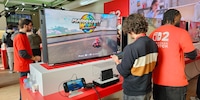
Background information
by Domagoj Belancic

Background information
by Domagoj Belancic